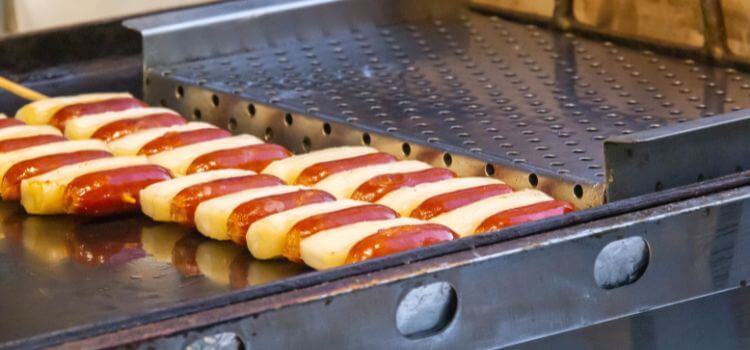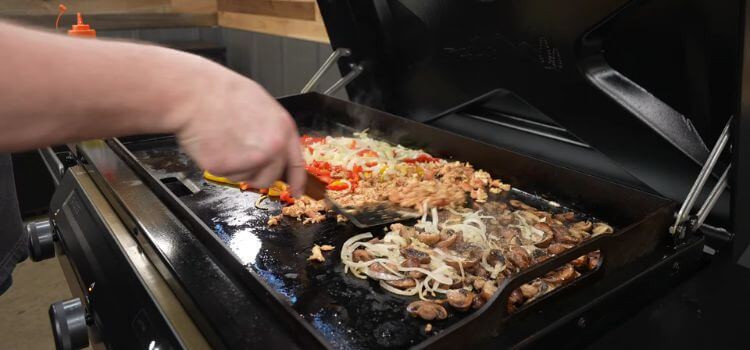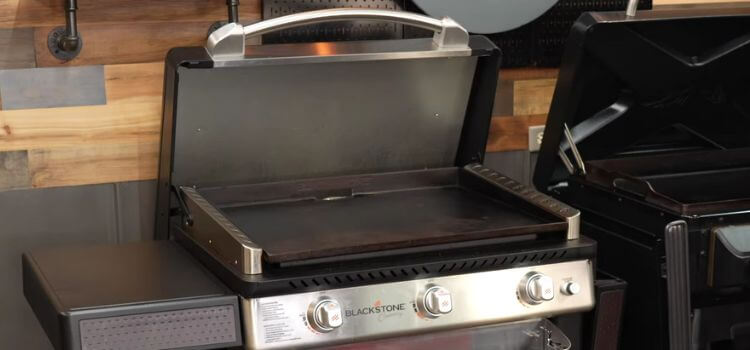As an Amazon Associate, I earn from qualifying purchases

In the realm of cooking versatility and culinary excellence, the age-old debate between Stainless Steel Griddles and Cast Iron griddles continues to simmer with a blend of tradition and modernity.
Join us as we embark on a flavorful exploration of the contrasting qualities and cooking prowess of these two iconic griddle materials, aiming to uncover the sizzling secrets behind their enduring popularity in gourmet cuisine.
Material Composition and Characteristics
Characteristics of Stainless Steel Griddles
Stainless Steel Griddles are crafted from a blend of iron and carbon, enriched with chromium and nickel to boost their strength, durability, and resistance to rust. This makes them an excellent choice for outdoor cooking as they can withstand exposure to the elements and maintain their functionality.
On a molecular level, Stainless Steel has a non-porous surface, which makes it easier to clean and prevents food from sticking. It also has a high heat retention capacity, meaning it can maintain its temperature for longer, making it ideal for searing and browning meats.
Characteristics of Cast Iron Griddles
Cast Iron skillets are made up primarily of iron with a carbon content ranging from 2-4%, which gives them their distinctive dark appearance. Renowned for their superior ability to retain and distribute heat, they are favored for cooking dishes that demand uniform and consistent heating.
One significant advantage of Cast Iron grills is their versatility in terms of cooking methods. They can be used on stovetops, ovens, grills, or even over an open flame, making them a go-to for outdoor enthusiasts.
Stainless Steel Griddle vs Cast Iron: A Comparison

Heat Retention and Distribution
Stainless Steel Griddles have a high heat retention capacity, making them ideal for searing and browning meats. However, they may take longer to heat than Cast Iron skillets.
Conversely, Cast Iron skillets boast superior heat retention and distribution capabilities, ensuring evenly cooked meals without the inconvenience of hot spots. They also have a quicker heating time compared to Stainless Steel griddles.
Durability and Maintenance
Stainless Steel griddles are known for their durability, as they can withstand exposure to the elements and maintain their functionality. They also require less maintenance than Cast Iron skillets, which must be seasoned regularly to prevent rusting.
However, with proper care and seasoning, Cast Iron grills can last for generations, making them a worthwhile investment for serious home cooks.
Cooking Methods
Both stainless steel and cast iron skillets have their own strengths when it comes to cooking methods. Stainless Steel grills are best for searing and browning meats, while Cast Iron griddles excel in versatile cooking methods such as stovetop, oven, or open-flame cooking.
Cooking Performance and Versatility

Cooking Results
Stainless Steel grills are great for achieving a crispy exterior and locking in juices, making them ideal for cooking meats. However, their non-porous surface may not provide the same depth of flavor as Cast Iron skillets.
Cast Iron skillets, with their exceptional heat retention and distribution, are perfect for creating flavorful dishes with a deep sear and golden crust. They also have the added benefit of developing a natural, non-stick surface over time, making them great for cooking delicate foods like eggs and pancakes.
Versatility in Cooking Methods
Stainless Steel griddles are suitable for outdoor cooking as they can withstand exposure to the elements. Cast iron skillets shine in their versatility and can be used on various heat sources.
Maintenance and Care
Stainless Steel Griddles
Stainless steel grills are relatively low maintenance, with their non-porous surface making them easier to clean and preventing food from sticking. Nevertheless, they might need periodic polishing to preserve their luster.
Cast Iron Griddles
Cast Iron skillets need regular seasoning to prevent rusting and maintain their natural non-stick surface. They must also be cleaned and dried thoroughly after each use to prevent any moisture from causing rust.
Cost Considerations and Value Assessment
Price Comparison
Generally, Stainless Steel grills tend to be more expensive than Cast Iron skillets. However, Cast Iron grills are known for their durability and long lifespan, making them a cost-effective choice in the long run.
Value Assessment
Both Stainless Steel and Cast Iron griddles offer excellent cooking results and versatility, with each material having unique strengths. It ultimately comes down to personal preference and cooking needs when determining the value of each grill.
User Preferences and Feedback
- Stainless Steel Griddle Users: Stainless Steel griddles are highly regarded for their long-lasting durability and effortless maintenance, establishing them as a favored option for outdoor culinary activities.
- Cast Iron Griddle Users: Cast Iron Griddle users rave about the versatility and flavorful results that can be achieved with this material. However, some may find the maintenance and seasoning process more time-consuming.
Conclusion
In conclusion, both Stainless Steel and Cast Iron grills have their strengths and characteristics, making them popular choices for home cooks and chefs alike. Whether you prefer the durability of Stainless Steel or the versatility of Cast Iron, both materials offer exceptional cooking performance and results that will elevate any dish.
Ultimately, the choice of the best material for your grill hinges on your personal preference and specific cooking requirements. So, happy cooking and enjoy your delicious meals prepared on these fantastic griddles!
As an Amazon Associate, I earn from qualifying purchases